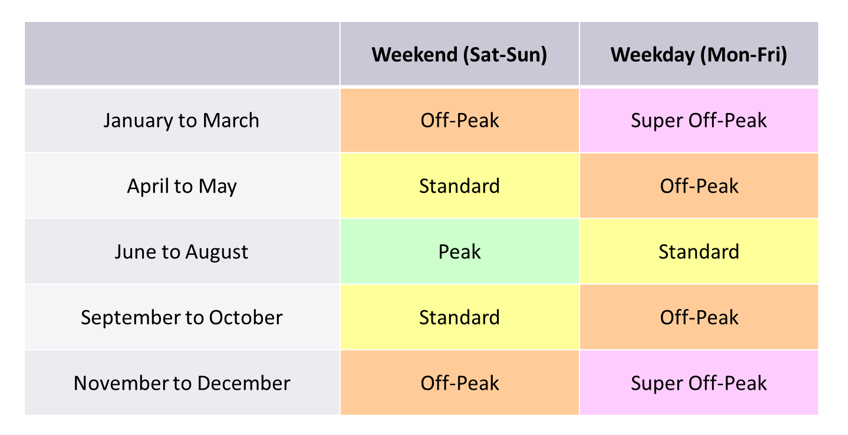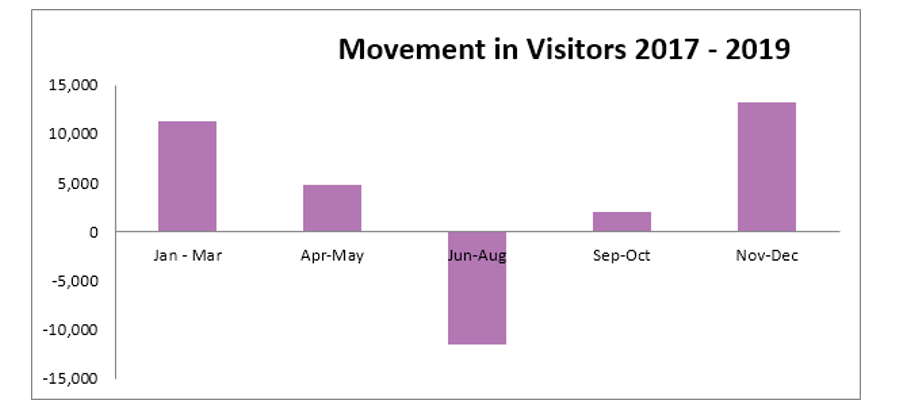Bath and North East Somerset Council introduced variable pricing at the Roman Baths in 2019. 4 years on, visitor enjoyment has increased, demand peaks are a thing of the past, and revenues are contributing to the council’s broader statutory responsibilities.
The challenge
The Roman Baths witnessed its busiest year ever in 2017. Bath and North East Somerset Council, who operate and maintain the attraction, observed that business had been booming for two reasons: firstly the impact of the Brexit referendum, on exchange rates had increased international tourism; and secondly, terror attacks in major cities had driven demand towards quieter, smaller cities. However, this surge in visitors was unexpected and difficult to manage, so when the busiest day of the year rolled around, there was little choice but to brace for impact. It was also at the busiest times that visitors had the worst experience and visitor enjoyment scores fell.
The solution
Fortunately, the council wasn’t alone: part of The Association of Leading Visitor Attractions (ALVA), they heard about variable pricing as a method to influence demand and made the decision to go out to tender for consultants to put a plan in place. Baker Richards won the bid, and over the coming months, worked with 5 years’ worth of ticketing and retail data to produce a strategy for price variation by time of week and time of year.
Although the decision felt radical at the time, the strategy stuck close to recognizable council values. The primary goal was to ensure all visitors had a good experience and felt they were getting value for money. Offering visitors more ticket choice meant they have to power to decide how much to pay and when to go, improving their ability to ascribe value.
Choosing manual variation rather than dynamic pricing (pricing based on algorithms) meant the council could ensure accessibility for certain groups, making the school holidays one of the cheaper periods for example. Local resident support was eased as residents already had free entry, and all profits went towards maintenance of the attraction or back towards the councils to fund statutory services, including adult social care.
Table 1: Variable pricing plan at BATHNES Roman Baths
The impact
The table and graph (below) show the impact of variable pricing, looking at the year before implementation, the year of implementation and last year. Enjoyment scores increase and value for money has been maintained (despite increasing the headline peak price by over 60%). People are also more likely to recommend the Roman Baths to friends and family. Scores were similar over Covid-19: despite capacity being vastly reduced, demand exceeded capacity and the council could maintain peak prices.
|
Year |
Enjoyment |
Value for Money |
Net Promoter Score |
|---|---|---|---|
|
2018/19 |
8.6 |
7.9 |
+50 |
|
2019/20 |
8.7 |
8.1 |
+59 |
|
2022/23 |
8.73 |
7.98 |
+61 |
The council were looking in particular for growth outside of the main peak seasons for visitors as a sign of success. In 2019, they saw growth of over 5% across each quarter and a 2.4% uplift in visitors numbers. This brought in £2.3 million of additional revenue in year 1 for the council whilst flattening spikes. This graph shows how the pricing structure lowered visitor numbers in peak times and increased them at other times of the year.
Graph: BATHNES Roman Baths Movement in visitors 2017-2019
How is the new approach being sustained?
For the Roman Baths, the next step is reviewing the data and refining their approach to pricing. Given the success of variable pricing, they are highly likely to keep it moving forward. They have also decided to maintain innovation from Covid, including timed tickets which has enabled them to control capacity by hour as well as by day; this additional control delivers a greater consistency to the visitor experience which supports a higher ticket price. Since the introduction of variable pricing, a future “super-peak” price point has been introduced over the summer months.
For variable pricing to work, you need to have the confidence and ability to replace demand you might lose by increasing the prices at certain times. In other words, demand can’t be so reactive that you lose all visitors when you change the price, but should be flexible enough to encourage visitors to consider different times of week and year. For this reason, variable pricing doesn’t work for every attraction - so the council has contained the strategy to the un-substitutable attraction of the Roman Baths so far.
Lessons learned
The council’s objective was and is to provide visitors with life-changing memories, rather than to make profit. However, commercialization can be daunting for some councils: Bath and North East Somerset had to be confident in not undervaluing their attraction as well as having the data to back up the positive impact.
Part of this was ensuring they were 100% confident in every aspect of their operation: as well as the intrinsic offer being unique and highly attractive, the customer service, retail, hygiene, and cleanliness all has to be excellent, so that visitors feel that they have paid a fair price for the comparison. To be successful, this strategy requires a legacy of adequate investment and maintenance in the site and experience.
Top tips:
- Be clear on your objectives.
- Get expert validation – this helps sell the strategy to colleagues, councillors and the wider community.
- Involve front of house teams and visitor experience staff.
- Hold your nerve – don’t tinker at the last minute!
- Communicate regularly post-implementation with all stakeholders. Use constant evaluation methods to feed back live results if possible.
If your council is interested in trialing variable pricing, you might consider a temporary exhibition as a ringfenced test case, ideally one with a high proportion of new visitors. You need to identify a period of demand which could support a higher price point and make sure you have the technical capability to trial it, i.e. a ticketing systems which can run a price schedule.
It might be helpful to think about where you can find value in your cultural offer, somewhere social and financial benefit can be accessed based on complete confidence in the existing offer. However, this doesn’t always need to be linked to a cultural offer: any situation where you can link demand to price could use variable pricing to influence visitor behaviour, whether this is in car parks or in carbon reduction.
Contact: Simon Addison


